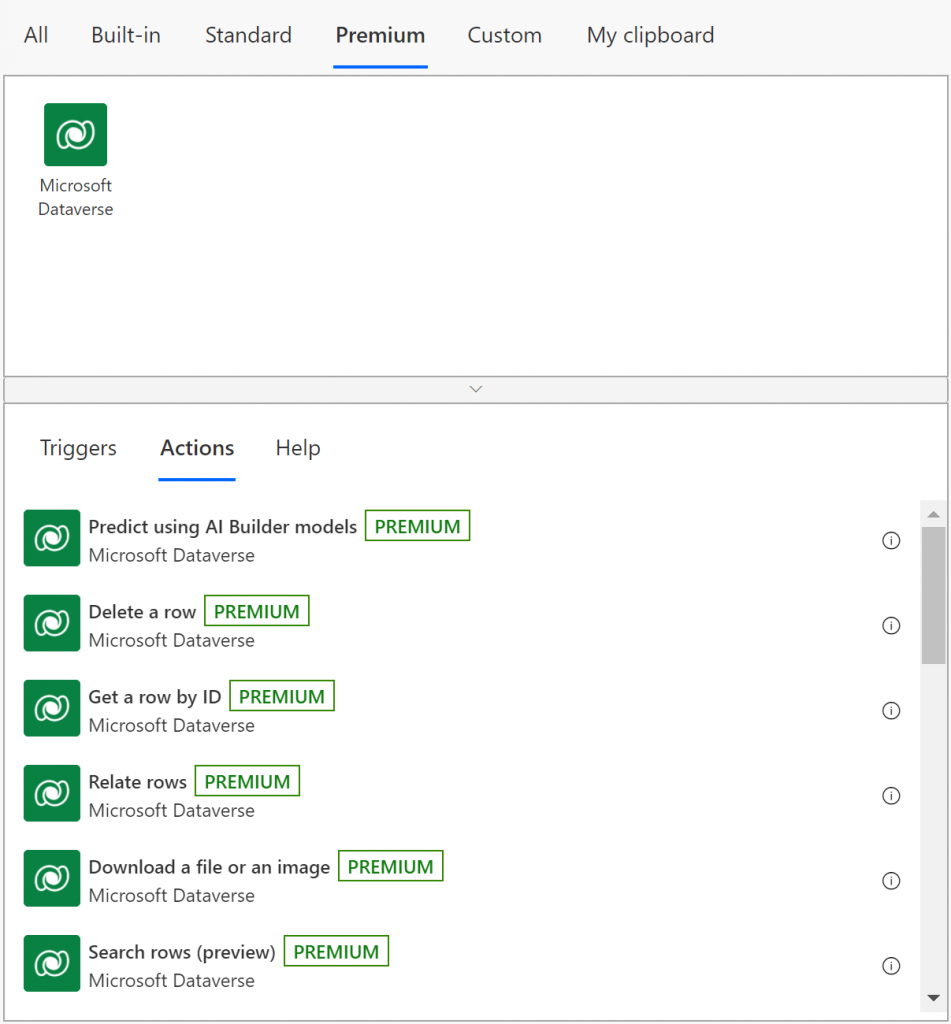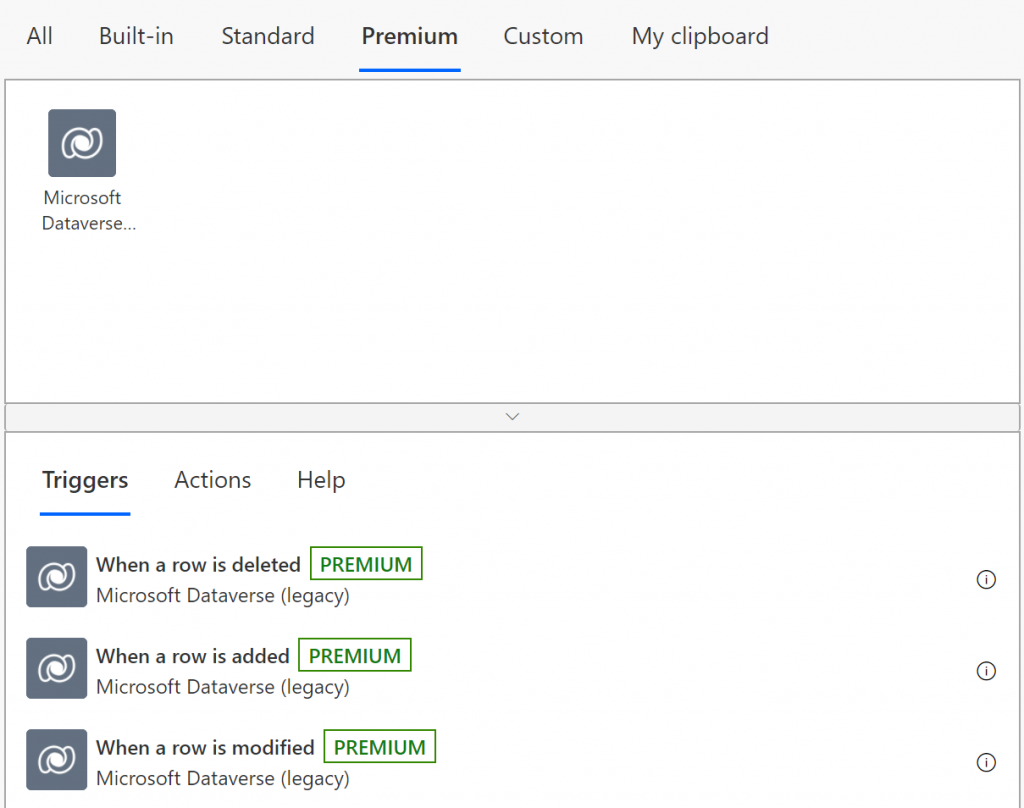Announcing changes to Power Automate’s native integration with Microsoft Dataverse
Last year we announced Microsoft Dataverse for Teams to reshape the future of work, along with a set of low-code tools to build apps, bots and automated processes. We are now making a series of naming, branding and discovery improvements to the Common Data Service connectors to help you seamlessly bring together the power of Microsoft Dataverse, Power Automate, Power Apps, Power Virtual Agents and the rest of Microsoft 365 and more.
The Common Data Service (current environment) connector, featuring a native integration between Power Automate and Dataverse, will now be known as Microsoft Dataverse, and appear with the new icon and color shade as shown below. Now we know that old habits die hard – and that’s why you will still be able to search using the old name for a while. Lastly, the names of triggers and actions, and their options and descriptions will be updated to match the revised terminology.

Besides being more reliable and performant than its predecessors, it has many cool features like –
- Triggering upon a combination of data change events like addition, modification or deletion of a row
- Trigger Filtering
- Trigger Delay
- User Impersonation
- Actions to add, get, modify, and delete rows in Dataverse
- List rows with pagination, advanced filtering, sorting and relational querying
- Add or remove relationships between rows of distinct tables
- Working with file or image content
- Calling bound and unbound Dataverse actions
- Performing a changeset request
- Invoking Dataverse flows from Power Apps canvas and model-driven apps
- Availability in Microsoft Dataverse for Teams
- Using current environment connector in non-solution based flows
- Modularization using nested parent and child flows (also see Call Child Flows and Helpful tips for using child flows for additional resources)
- Availability in all Power Automate public and sovereign regions, including US Government GCC and China
- Localization in all 41 languages supported in Power Automate
Throughout the month of April, we’ll add more documentation for each of the above topics in all our supported languages, with refreshed examples and images.
What’s even better than the existing features – is that we are continuously adding new features, improvements and bug fixes. Next month, we are releasing two new capabilities – a new action that redefines information retrieval with an AI-powered search and a new trigger that enables kickstarting automation based on business logic execution, to complement the existing trigger that responds only to data changes in a table row. Based on the business events model native to Dynamics 365 Finance & Operations, the new trigger radically simplifies orchestrating automation across Dataverse, Finance & Operations and Dynamics 365 Customer Engagement apps, bringing your marketing, sales, operations and customer service together over one unified platform.
That’s not all – here are some of the usability improvements and key bug fixes added recently –
- Better discoverability of AI Builder actions in Dataverse
- User-friendly formatted values (eg. option set labels instead of GUIDs)
- Support for Owner field while creating Tasks
- Multi-select field parity with legacy connectors
- Improved date time field handling
- Improved null value handling
- Bug fixes for Relate rows action
- Bug fixes for entity options during flow design time
- Base64 encoding mismatches in text data type fields
- Several security, performance and throughput improvements
The previous Common Data Service connector will be known as Microsoft Dataverse (legacy). It will be shown with the new icon, albeit in a de-emphasized color shade as shown below.

The Dynamics 365 connector will not undergo any change, as we announced its deprecation on May 5, 2020.
In the upcoming months, we will continue to make stability improvements and add more capabilities to the Dataverse connector, including but not limited to some of the unique capabilities of the Dataverse (legacy) connector. Let us know what you would like us to add next!
Learn how to make the most of all these capabilities in the Dataverse connector documentation and reference, and share your feedback on UserVoice directly, or in the designer as shown below.

Happy automating!
